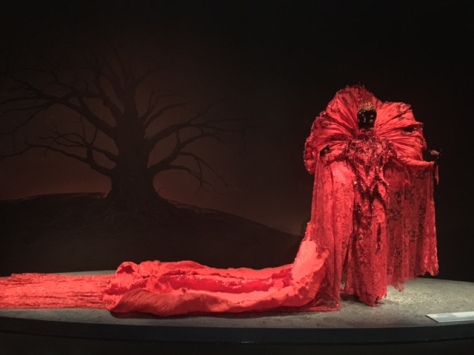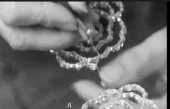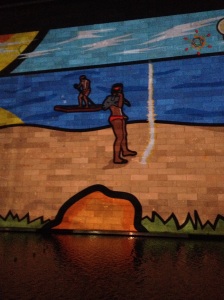THE NEW WAVE
The 1980s New York Art scene gave rise to emerging young talent, such as the artists Jean-Michel Basquiat and Keith Haring and introduced musicians Debra Harry (Blondie) and Madonna. Andy Warhol had created a niche that they were destined to populate. The concept of the artist as a brand and a superstar seduced the young and transported them from Graffiti Artists to Legends. The middle classes had left the town for a comfortable suburban life and the urban alleys and apartments became a playground for the creativily misunderstood. The video clip of Blondies ‘Rapture’ introduced the new players.

Basquiat’s work reveals a tapestry of lines that go into the development of the image whereas Haring’s art, is the stripped back result. The NGV exhibition is currently showcasing both artists under the banner of ‘Crossing Lines’. It’s a journey back into our recent past.

In the early 80’s, Basquiat was surviving without an income and sourced materials from his environment. He took doors and whatever boards he could from condemned properties, to be his canvas. The palette is made up of house paint and oil pastels, this makes the work more intimate as the artists circumstance is apparent. The roughly stretched canvas suggest an artist more interested in the work than the presentation.
Both artists were acute to the prejudices hidden within the social fabric of the time. Haring and Basquiat were presented in the 1981 ‘Public Address’ exhibition hosted by Annina Nosei Gallery. The work ‘Irony of a Negro Policeman’ addressed the issues Basquiat struggled with; that police hurt Black Americans. The figure with anxious eyes and a clenched mouth highlights the inner turmoil. Using the word PAWN; he spells out his conviction.

Haring once said; Basquiat 'wielded his brush as a weapon, struggling against exploitation, consumer society. repression, racism and genocide'
In Haring’s ‘Malcom X’ 1988; he visually records the activists death within a red noose, likening it to a trophy killing.
Jean-Paul Basquiat rode in limousines because taxis wouldn’t stop for him. He lived the Art Star lifestyle within the dangerous backdrop of racial realities. Many of Basquaits works are untitled, allowing the imagery to speak volumes, like the artist. A man of few words, using Art, to describe his large emotions. He often used halo’s above his anatomic skulls as a reference to the deaths of martyrs.

Both Basquiat and Haring considered themselves ‘Radiant Children’ entitled and indulgent. They crossed the line in decadence that would ultimately lead to their early demise. Basquiat threw parties serving caviar and cocaine and at 27 died from an overdose. Haring lived an unrestrained party-life and eventually fell victim to Aids. They rose out of the tar of the City, like flowers in the cracked sidewalk and as the era faded away, the value of their work became currency.
FEATURE IMAGE
detail from Untitled (Pecho/Oreja) 82-83
GO ON THE NGV VIRTUAL TOUR of the exhibition.
















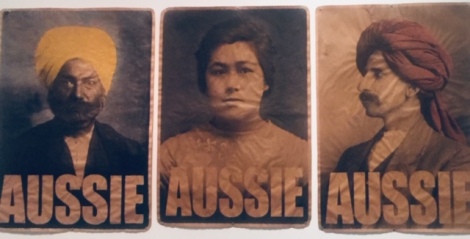



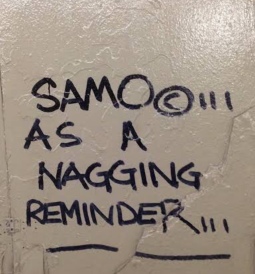























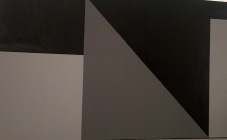
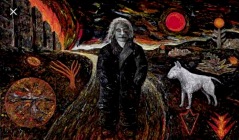






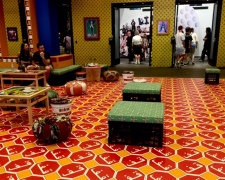

 We arrive at the GOU PEI exhibit, a Chinese Fabric Artist that engineers her Masterpieces, stitch by stitch, bead upon bead, golden thread and a mantle of dreams. Inspired by an ancient past with dresses that would inspire the Pope. Her exhibit arrived in Melbourne, as precious as the Emperors Palace treasures and is located in the eye of the TRIENNIAL storm at the NGV.
We arrive at the GOU PEI exhibit, a Chinese Fabric Artist that engineers her Masterpieces, stitch by stitch, bead upon bead, golden thread and a mantle of dreams. Inspired by an ancient past with dresses that would inspire the Pope. Her exhibit arrived in Melbourne, as precious as the Emperors Palace treasures and is located in the eye of the TRIENNIAL storm at the NGV.